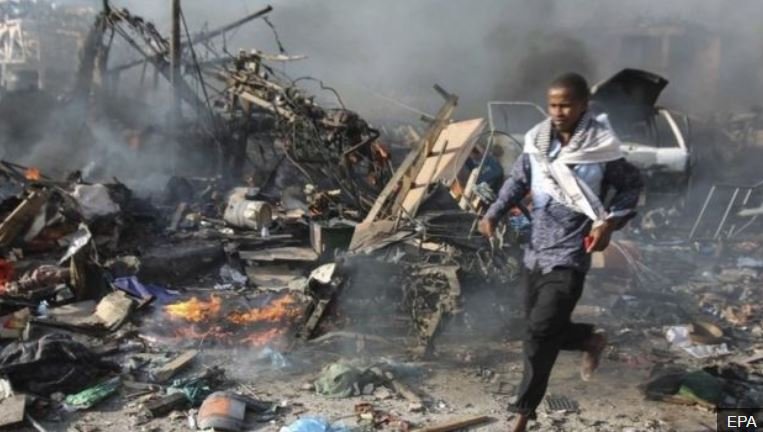The US strikes on Iran’s nuclear facilities did not destroy the country’s nuclear programme and most likely pushed it back by months, an early Pentagon intelligence assessment of the operation reveals.
According to individuals acquainted with the Defence Intelligence Agency’s assessment, Saturday’s bombings did not destroy the Islamic Republic’s stockpile of enriched uranium.
The White House stated that the “flat-out wrong” assessment was leaked by “a low-level loser in the intelligence community”.
President Donald Trump declared Iran’s nuclear sites “completely destroyed” and accused the media of “an attempt to demean one of the most successful military strikes in history”.
The US intelligence community has 18 agencies with varying missions and areas of expertise, which can lead to conflicting reports.
For instance, there is still disagreement about the origins of Covid-19. Future reports may provide more information on the extent of damage to the facilities.
CBS reported that officials familiar with the report cautioned that it was an early assessment that could change as more information becomes available.
The United States targeted three nuclear installations in Fordo, Natanz, and Isfahan using “bunker buster” bombs capable of piercing 18 m (60 ft) of concrete or 61 m (200 ft) of earth before exploding.
However, sources familiar with the Pentagon’s intelligence assessment believe Iran’s centrifuges are mostly “intact” and the damage was limited to above-ground installations.
The entrances to two nuclear sites were blocked, and some infrastructure was destroyed or damaged, but the majority of the facilities, which are deep underground, escaped the blasts.
According to unidentified sources, the strike set Iran back “a few months, tops,” and any resumption of its nuclear program may be determined by how long it takes the country to dig out and restore.
According to CBS, some of Iran’s enriched uranium stockpile was transferred before the strikes.
The US Massive Ordnance Penetrator bomb, weighing 30,000 pounds (14,000 kilogrammes), was supposed to be the sole weapon capable of destroying Iran’s underground enrichment facilities.
Tehran has always stated that its nuclear project is for peaceful purposes.
In the hours following Saturday’s strikes, Gen. Dan Caine, chairman of the Joint Chiefs of Staff, warned reporters that it would take time to analyse the installations’ damage.
However, he said that “all three sites sustained extremely severe damage and destruction”. Satellite images showed six fresh craters clustered around two entry points at the Fordo nuclear sites, as well as grey dust and debris.
The photographs, however, do not reveal how much damage the locations incurred below the surface.
Hassan Abedini, Iran’s public broadcaster’s deputy political director, stated the three locations targeted by the US had been evacuated a “while ago” and that Iran “didn’t suffer a major blow because the materials had already been taken out”.
US officials, on the other hand, praised the mission as a success, as did Israeli officials.
In a statement on Tuesday, Defence Secretary Pete Hegseth stated that “based on everything we have seen – and I’ve seen it all – our bombing campaign obliterated Iran’s ability to create nuclear weapons”.
“Anyone who says the bombs were not devastating is just trying to undermine the president and the successful mission,” Hegseth said.
US Congressman Brad Sherman, a Democratic member of the House Foreign Affairs Committee, told the BBC that the Trump administration was using ambiguous terminology to announce victory, even though it is still unclear what the bombing campaign accomplished.
He said that the government has not stated if the strikes destroyed Iran’s ability to weaponise uranium or its uranium-enriching centrifuges or decreased its stockpile, which he said was sufficient to make nine nuclear bombs.
“When they say obliterate the programme, they’re not even saying whether it’s obliterated the centrifuges and the ability to create uranium in the future or whether it is obliterating the stockpile,” Sherman told the BBC.
“All indications, including Vice-President Vance’s statement, indicate that we don’t think we got the stockpile,” he said, noting images that show trucks going to one of the facilities days before the strikes.”
Israeli Prime Minister Benjamin Netanyahu stated on Tuesday that since hostilities with Iran began on June 13, Israel has been effective in limiting Iran’s nuclear goals and destroying its missile arsenal.
“We have removed two immediate existential threats to us – the threat of nuclear annihilation and the threat of annihilation by 20,000 ballistic missiles,” Netanyahu said in video remarks issued by his office.
According to Saudi news station Al Hadath, which cited an unknown Israeli source, Israel believes the majority of Iran’s enriched uranium is buried beneath the rubble.
David Albright, president of the Institute for Science and International Security and an expert in secret nuclear weapons research, stated that the damage Iran sustained as a result of the US attacks will require “significant time, investment, and energy” to repair its nuclear program.
In a post on X, Albright stated that Iran is “under intense scrutiny and observation from the United States and Israel,” and that if it attempts to rebuild, it faces future strikes.
Iran replied to the US bombings on Monday, launching a missile attack on Qatar’s Al-Udeid Air Base, which houses thousands of US personnel.
The attack was mostly intercepted, with no casualties or injuries reported.
Since Iran’s reprisal, Trump and Qatari mediators have arranged an Iran-Israel ceasefire.










